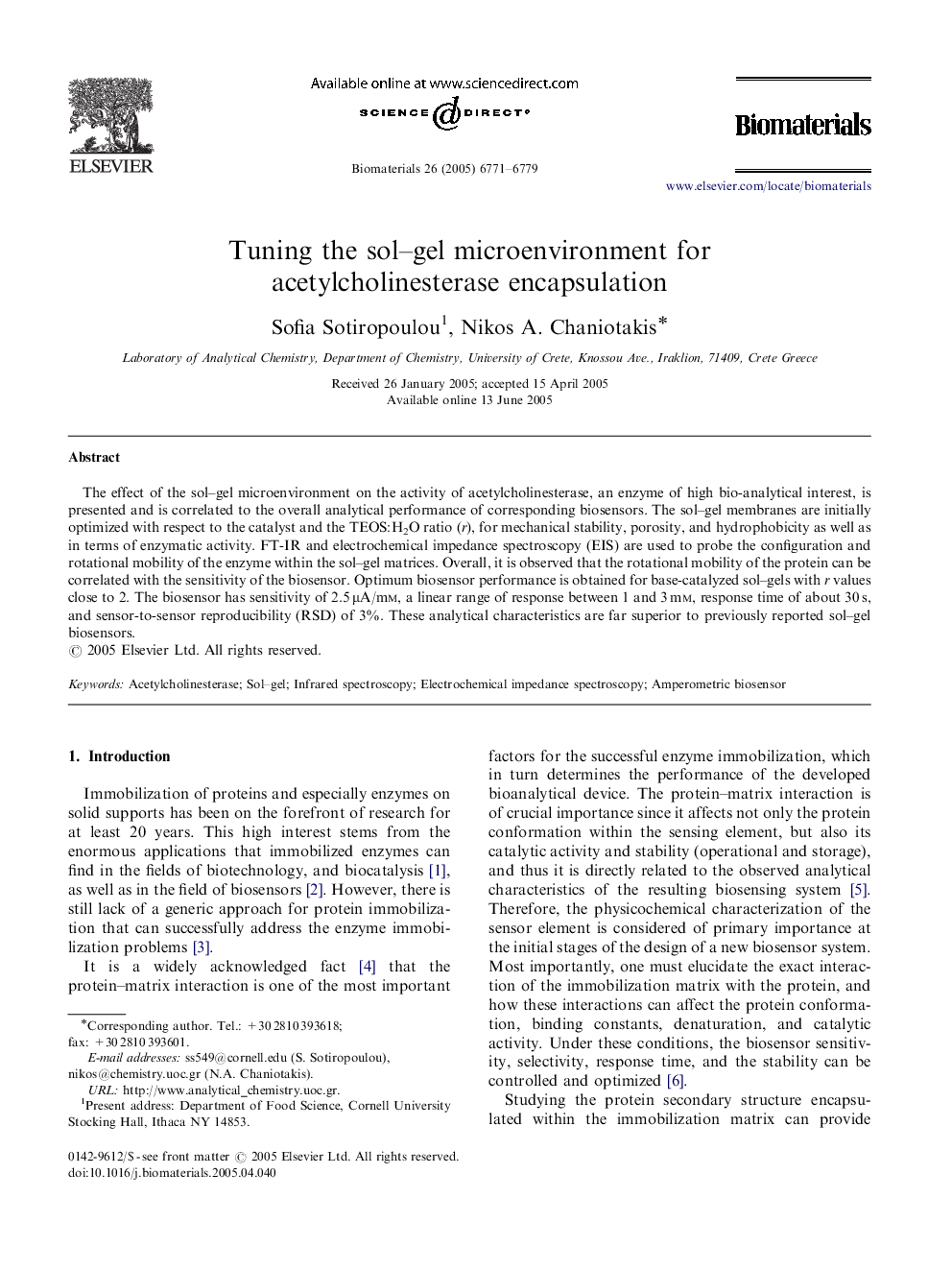| Article ID | Journal | Published Year | Pages | File Type |
|---|---|---|---|---|
| 10999 | Biomaterials | 2005 | 9 Pages |
The effect of the sol–gel microenvironment on the activity of acetylcholinesterase, an enzyme of high bio-analytical interest, is presented and is correlated to the overall analytical performance of corresponding biosensors. The sol–gel membranes are initially optimized with respect to the catalyst and the TEOS:H2O ratio (r), for mechanical stability, porosity, and hydrophobicity as well as in terms of enzymatic activity. FT-IR and electrochemical impedance spectroscopy (EIS) are used to probe the configuration and rotational mobility of the enzyme within the sol–gel matrices. Overall, it is observed that the rotational mobility of the protein can be correlated with the sensitivity of the biosensor. Optimum biosensor performance is obtained for base-catalyzed sol–gels with r values close to 2. The biosensor has sensitivity of 2.5 μA/mm, a linear range of response between 1 and 3 mm, response time of about 30 s, and sensor-to-sensor reproducibility (RSD) of 3%. These analytical characteristics are far superior to previously reported sol–gel biosensors.
